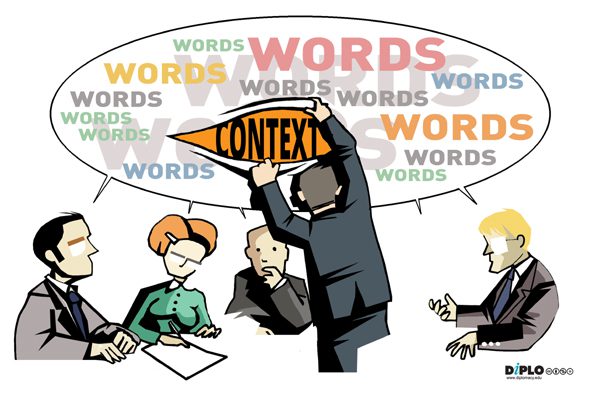Academic diplomacy
We often think of diplomats in formal attire negotiating treaties in international relations. However, academic diplomacy plays a crucial and quieter role in shaping our world. This form of diplomacy involves universities, research labs, and scholars who create connections and promote understanding. They help bridge political divides through shared knowledge and discovery.
What is academic diplomacy?
Academic diplomacy strengthens connections between nations through higher education, research, and educational exchange. It leverages the strengths of universities and research institutions to achieve foreign policy goals and foster goodwill. This approach creates opportunities for people to communicate, collaborate, and learn from one another, even when their governments may disagree. While student exchange programs are important, academic diplomacy encompasses joint efforts on climate change, combating pandemics, developing new technologies, and forming educational partnerships across countries.
Why is knowledge a powerful diplomatic tool?
Today, academic diplomacy is more critical than ever. Why? Because it fosters relationships rooted in a fundamental goal: the pursuit of truth and understanding. Established in classrooms and laboratories, these connections are remarkably resilient, surviving political crises that may sever formal ties.
Consider the global challenges we face: pandemics, climate change, energy transitions, and the ethics of artificial intelligence. No single nation possesses all the answers. Academic diplomacy provides a platform to unite the brightest minds from diverse backgrounds. This collaboration fuels innovation, allows for the sharing of crucial knowledge, and helps us build a more prosperous and sustainable future together.
Moreover, it serves as a powerful form of “soft power.” When a country welcomes international students and researchers, it highlights its intellectual vibrancy and cultural richness. These individuals often return to their home countries with a deeper and more nuanced understanding of their host nation, transforming into informal ambassadors. Flagship programs like the Fulbright Program, established by the United States after World War II, have built extensive global networks of influential alums, fostering understanding and strengthening diplomatic ties for decades.
Walking the delicate balance of geopolitics: Transparency versus safety
Academic diplomacy does not exist in isolation. As global competition intensifies, geopolitical factors have increasingly shaped the international research landscape. The openness that drives scientific progress is now under scrutiny.
Research in critical fields such as semiconductors, artificial intelligence, biotechnology, and satellite technology has “dual-use” potential, meaning it can serve peaceful and military purposes. This raises valid concerns regarding national security. Nations are becoming more cautious about knowledge transfer due to fears of intellectual property theft and the misuse of sensitive research. As a result, there are tighter controls, increased vetting of researchers and students, and a push toward “de-risking” academic partnerships, especially between geopolitical rivals.
This situation presents a significant challenge: maintaining the open and collaborative spirit necessary for scientific advancement while protecting national security. Striking this balance is one of academic diplomacy’s most critical tests today. It requires careful navigation to avoid stifling innovation or creating new barriers to understanding, particularly when we need collaboration the most.
How does academic diplomacy work?
How does diplomacy manifest on the ground? It employs a variety of tools:
Exchanges: Programs like the EU’s Erasmus+ enable student and faculty mobility, allowing individuals to immerse themselves in new academic and cultural settings and build lasting personal connections.
Partnerships: Universities create joint degree programs, collaborative research projects, and even international branch campuses, integrating cooperation into their core missions.
Forums and networks: International conferences, workshops, and global research consortia gather experts to foster dialogue and develop global communities focused on shared challenges.
Multilateral efforts: Organisations like UNESCO work to establish global standards, promote academic freedom, and facilitate worldwide educational initiatives.
Informal channels: Academics often engage in “Track II” diplomacy, discussing sensitive issues outside official government frameworks. This provides opportunities for creative solutions and back-channel communication.
Learning from success
History provides compelling examples of collaboration and diplomacy through science. Take CERN, the European Organisation for Nuclear Research, for instance. Founded in 1954, it united scientists from war-torn Europe, including former adversaries, to advance fundamental physics peacefully. Today, CERN is a global symbol of collaboration, demonstrating that shared scientific goals can overcome profound political divides.
Similarly, Harvard University is a globally renowned institution whose strength lies in its research output and ability to attract future leaders from all corners of the globe. The students and scholars who join Harvard build enduring networks in Cambridge, often influencing global affairs long after graduation. By establishing global centres and promoting international dialogue, Harvard plays a significant role as a non-state actor in the diplomatic arena.
Even during the Cold War, initiatives like the Pugwash Conferences brought together scientists from both East and West in private discussions. This allowed for open conversations about nuclear threats at a time when official diplomatic channels were closed—efforts that ultimately earned the conference organisers the Nobel Peace Prize.
The way forward
Academic diplomacy is not a cure-all for global conflicts but a crucial and often underestimated tool. It operates personally, promoting trust and understanding through collaboration, exchanges, and shared discoveries. It reminds us that, despite our differences, our collective quest for knowledge can bring us together.
Nurturing these connections is essential as we approach a future filled with significant challenges and exciting opportunities. This effort requires ongoing investment, a commitment to academic freedom, and the wisdom to balance openness with security. We contribute to a peaceful, innovative, and understanding world by supporting academic diplomacy.
Click to show page navigation!




